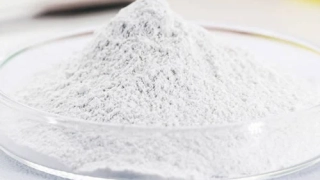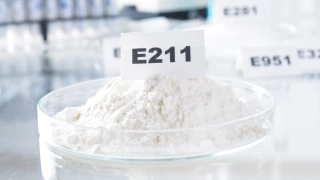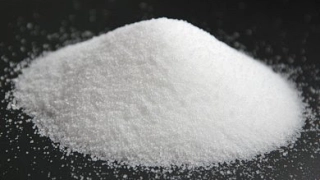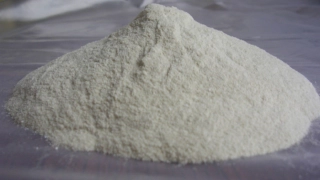Monosodium Glutamate (E621): Taste Profile, Aroma, Benefits and Health Risks
Monosodium glutamate (E621), commonly known as MSG, is a sodium salt of glutamic acid, a naturally occurring amino acid. MSG is widely used as a flavor enhancer in processed foods, restaurant dishes, and snacks. It is prized for its ability to intensify the savory, umami quality of foods, making flavors richer and more complex.
Monosodium glutamate (MSG) is generally recognized as safe for most people, but some individuals may experience sensitivity reactions, often referred to as "Chinese Restaurant Syndrome," such as headache or flushing. No proven allergenicity exists, but those sensitive to glutamates should moderate intake.
What does Monosodium Glutamate (E621) taste like?
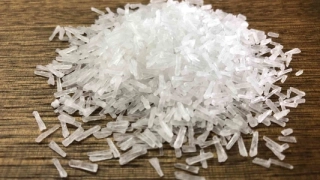
Complete Sensory Description:
-
Taste: MSG delivers a pronounced umami taste—savory, meaty, and brothy. It does not taste salty, sweet, sour, or bitter, but enhances the overall flavor perception, making foods taste fuller and more satisfying.
-
Aroma: MSG itself is odorless. In food, it amplifies inherent aromas, particularly in protein-rich or fermented foods, and deepens the overall scent profile.
-
Texture: Pure MSG is a fine, crystalline powder that dissolves rapidly in water or food without altering texture.
-
Appearance: MSG appears as white, crystalline granules or powder, visually similar to fine salt or sugar. In foods, it is invisible and undetectable by appearance.
In-depth Flavor Analysis:
MSG works at the molecular level by stimulating specific taste receptors (T1R1/T1R3) on the tongue, responsible for detecting glutamate and thus umami. This fifth basic taste, distinct from sweet, sour, salty, or bitter, provides depth and savoriness. MSG intensifies flavors by activating synergistic effects with nucleotides (such as IMP and GMP), commonly found in meat, fish, and mushrooms, resulting in a pronounced mouth-filling sensation. It masks off-flavors and reduces the need for added salt, while enhancing the perception of protein-rich foods. The flavor-enhancing effect is most noticeable at concentrations between 0.2% and 0.8% in food, with excessive amounts leading to an undesirable, lingering aftertaste.
Varieties and Culinary Applications:
MSG is used extensively in savory processed foods, canned soups, snacks, instant noodles, frozen meals, and spice mixes. It is popular in Asian cuisine for seasoning broths, sauces, and stir-fries, and is sometimes used in Western recipes to enhance depth of flavor in gravies and stews. MSG’s flavor-enhancing ability makes it valuable for vegetarian and vegan foods, where it replicates the umami usually contributed by animal proteins.
Selection and Storage:
MSG for culinary use is available as food-grade crystals or powder, typically packaged in airtight containers. It should be stored in a cool, dry place, protected from moisture to prevent clumping. Under proper storage, MSG remains stable and effective indefinitely.

Nutritional Insights:
MSG is low in sodium compared to table salt, providing similar flavor enhancement with less sodium intake, which may benefit those monitoring salt consumption. It contains negligible calories and is metabolized as glutamic acid, a non-essential amino acid found in many foods, including tomatoes, cheese, and seaweed.
Expert Insights & Culinary Tips:
Culinary experts recommend using MSG sparingly for optimal results—too much can overpower a dish. It is best added during cooking to allow even distribution and full flavor development. Chefs use MSG to heighten the savory aspects of vegetable, meat, and soup dishes, especially when natural umami content is low.
Interesting and Curious Facts:
Glutamate was first identified as the source of umami by Japanese scientist Kikunae Ikeda in 1908. MSG production now relies on the fermentation of starches or sugars by bacteria. Despite myths, scientific studies have not found consistent evidence linking MSG to severe adverse health effects in the general population, and it is widely approved by food safety authorities globally.
Harm and Dietary Considerations:
For most people, MSG is safe when consumed in typical food amounts. A small subset may experience transient symptoms like headache or flushing after consuming large quantities ("MSG symptom complex"), but double-blind studies have not confirmed a consistent reaction. There are no established long-term health risks at normal dietary levels. Individuals with specific sensitivity to glutamates or certain medical conditions (like epilepsy) may be advised to avoid high intake.
Religious Dietary Considerations:
MSG is generally permissible under Halal, Kosher, and Hindu dietary guidelines, as it is produced through plant-based fermentation and does not contain animal-derived ingredients.
Final Thoughts & Sensory Journey:
Monosodium glutamate (E621) elevates the umami depth of dishes, imparting a rich, savory fullness that enhances the overall dining experience without overwhelming the palate.
Resources:
-
Yamaguchi, S., & Ninomiya, K. (2000). Umami and food palatability. The Journal of Nutrition.
-
Belitz, H.-D., Grosch, W., & Schieberle, P. (2009). Food Chemistry (4th Edition). Springer.
-
Reineccius, G. (2006). Flavor Chemistry and Technology (2nd Edition). CRC Press.


